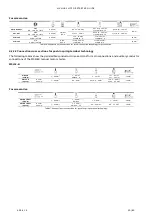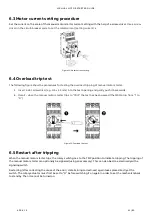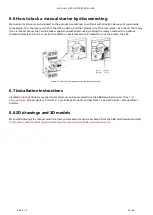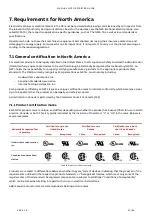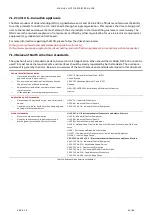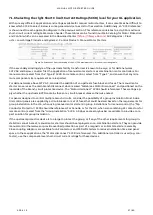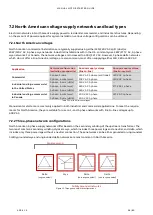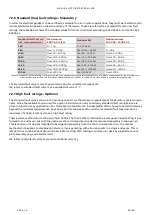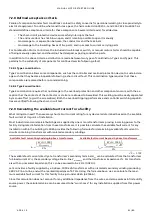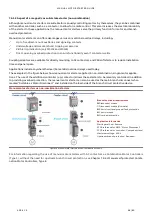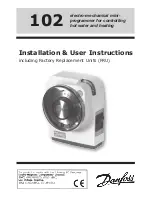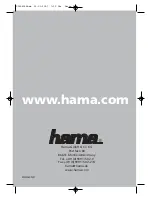
MANUAL MOTOR STARTER GUIDE
APRIL 19
60/80
7.2.6 Standard (low) fault ratings - Mandatory
In order for electrical products to be certified as suitable for use in motor applications, they must be tested to a min-
imum standard value based on the size and type of the device. These are referred to as standard fault or low fault
ratings. The table below shows the standard values for motor controllers according to UL 60947-4-1 and CSA C22.2
60947-4-1.
Standard fault test cur-
rent, rms symmetrical
Maximum hp
600 V AC or less
Maximum kW
Maximum Amps
600 V AC – 1500 V AC
1 kA
0 – 1 hp
0 – 0.746 kW
--
5 kA
Over 1 – 50 hp
Over 0.746 – 38 kW
0 – 50 A
10 kA
Over 50 – 200 hp
Over 38 – 149 kW
Over 50 – 200 A
18 kA
Over 200 – 400 hp
Over 149 – 298 kW
Over 200 – 400 A
30 kA
Over 400 – 600 hp
Over 298 – 441 kW
Over 400 – 600 A
42 kA
Over 600 – 900 hp
Over 441 – 671 kW
Over 600 – 850 A
85 kA
Over 900 – 1600 hp
Over 671 – 1193 kW
Over 850 – 1500 A
100 kA
Over 1600 hp
Over 1193 kW
Over 1500 A
Table 24: Standard (low) fault ratings – mandatory. Note: for a manual motor controller intended for use as a means of disconnection, the minimum short-
circuit current rating is 5kA. The information above is based on UL 60947-4-1 Table 9.3.4.2.1DV.1.1.1 and is intended for reference only.
The standard fault value is also the assumed rating for unmarked components.
IEC refers to standard fault current as a prospective current “r”.
7.2.7 High fault ratings - Optional
The standard fault values shown in the previous chapter are the minimum requirements for all motor control compo-
nents. Since the available fault current for a given installation can vary drastically, standard fault ratings alone are
often too low for many applications. For this reason, manufactures, including ABB, often choose to test their devices
beyond the minimum requirements. Any short-circuit testing above the minimum standard fault level and up to a
maximum of 200 kA is referred to as a high fault rating.
There are two methods for testing high fault SCCRs. The first method, referred to as component-level testing, is per-
formed in an enclosure, but with the upstream short-circuit protective device mounted separately in the open air.
This is common for devices intended to be supplied separately from the short-circuit protection. The second
method, which applies to combination starters, involves testing with all components in a single enclosure. This is
referred to as combination motor controller (CMC) testing. CMC testing is common for devices supplied as a com-
plete assembly (e.g. enclosed starters).
IEC refers to high fault current as rated conditional current I
q





